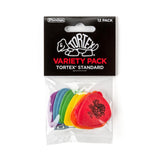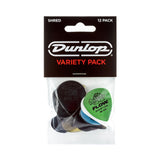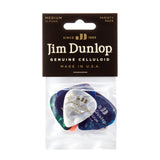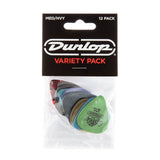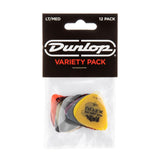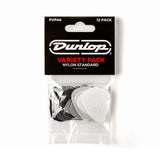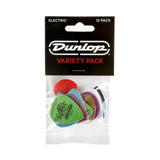Among the many components found in an electric guitar, the tone control capacitor often remains shrouded in mystery and misconception. In this concise guide, we will unravel its workings and help you select the ideal capacitor for your instrument.
Situated within the guitar's control compartment, alongside other electronic elements, this unique component is typically affixed to the tone control, setting it apart from the volume control in terms of construction.
What is a capacitor?
A capacitor, at its core, is a remarkably straightforward device. Comprising two terminals or legs, both linked to a metal plate and separated by an insulating material, it operates on the principle of charge storage without allowing direct contact between the metal plates. For a visual representation, refer to the illustration below.
How Does it Work?
Understanding the Impact of Tone Capacitors on Guitar Tone Comprehending how a tone capacitor operates is crucial to grasp its role in shaping your guitar's sound. Simply put, a tone capacitor impedes low frequencies while allowing higher frequencies to pass through. Now, let's explore its practical application in the context of guitars.
In most guitar setups, players utilise a tone potentiometer, essentially a standard volume potentiometer with a tone capacitor soldered onto it. One terminal of the tone capacitor is soldered onto one of the potentiometer lugs, while the other terminal connects to ground. To help visualise the wiring and its functionality, refer to the image below. Please note that the green arrow indicates the direction of knob rotation, and the orientation of the potentiometer in the image is upside down, as if viewed from the back of the guitar.

By incorporating a tone capacitor into the circuit, guitarists can selectively filter out lower frequencies, resulting in a tonal profile that emphasises the higher frequencies. This provides control over the overall brightness or warmth of the guitar's sound, offering an additional dimension to sculpting the desired tone.
Choosing the right cap value
In essence, the higher the capacitance value, the more pronounced the attenuation of high frequencies. A capacitor with a value of .022µF will primarily affect the highs, while a .1µF capacitor will extend its impact deep into the midrange, creating a more noticeable tonal roll-off. Therefore, choosing the appropriate capacitor value allows guitarists to tailor their instrument's sound by finely adjusting the roll-off point and sculpting the desired frequency response.
How to Determine the Right Capacitor Value
When it comes to selecting the appropriate capacitor value for your guitar, the most reliable method is to rely on your ears and evaluate the impact on your instrument's tone when using the tone control. Pay attention to the following factors while playing:
- Tone Character: Does your tone become excessively dark and muffled when you turn down the tone control, or perhaps it doesn't darken enough? Assess whether the desired tonal range is achieved.
- Tone Control Responsiveness: Observe how the tone changes as you turn the knob slightly. Does it undergo a significant transformation initially, followed by minimal variation, or does it exhibit a smooth transition from bright to dark?
If you find yourself dissatisfied with the responses to these questions, it may be worth investigating the value of your capacitor. Experimenting with different capacitor values can offer a solution to achieving the desired tonal characteristics and responsiveness, enabling you to fine-tune your instrument's tone control to your preference.
Still Unsure?
Our suggestion is to begin with the .022µF capacitor value and assess your opinion on the resulting tone. From there, you can make adjustments based on your preferences. If you find the tone to be excessively dark, consider experimenting with a lower value such as .015µF or .01µF capacitors. Conversely, if the tone appears overly bright, you might want to try higher values like .033µF or .047µF capacitors. By experimenting with different capacitor values, you can fine-tune your guitar's tone to achieve the desired balance and character.
Capacitor Materials
Inexpensive guitars often utilise ceramic disc capacitors due to their affordability, while higher-end guitars typically opt for superior-quality capacitors. The key distinction lies in their tolerance, which refers to how closely the component aligns with its specified value.

Cheap ceramic disc capacitors exhibit a high tolerance of 20% or worse. This means that when purchasing a .022uf capacitor, there's a possibility of receiving one with a value of .03 or .015 instead. Such high tolerance results in an unpredictable tonal variation from one guitar to another, as the actual capacitor value can vary significantly. Therefore, the likelihood of obtaining the correct value is low when using capacitors with a high tolerance.
On the other hand, pricier capacitors boast a low tolerance of 5% or better. This implies that tone control capacitors are more likely to possess a value quite close to the expected specification, ensuring a more consistent tonal outcome.
Mylar capacitors offer several benefits when used in electric guitars. These capacitors, constructed with a polyester film known as Mylar as the dielectric material, are highly regarded for their superior performance. One key advantage is their low tolerance, typically 5% or better. This means that the actual capacitance value closely matches the specified value, ensuring consistent and predictable tone control.

Additionally, Mylar caps are less susceptible to microphonic effects compared to ceramic capacitors, reducing the risk of noise interference. These qualities make Mylar capacitors a popular choice among guitarists seeking high-quality, dependable components for their instruments.
Polyester capacitors offer notable advantages when incorporated into electric guitars. These capacitors utilise a polyester film as the dielectric material, providing numerous benefits. One key advantage is their low tolerance, typically 5% or better, ensuring precise and consistent capacitance values for accurate tone control.

Polyester capacitors exhibit excellent temperature stability and low leakage, contributing to reliable signal transmission and minimal distortion. Favourites such as Sprague Orange Drops and Sozo Yellow Mustard caps are renowned for their exceptional clarity, preserving the natural character of the guitar's tone.
With their robust construction and superior sonic performance, polyester capacitors have earned a strong reputation among guitarists seeking top-tier components for their instruments.
Oil-filled capacitors offer several advantages in electric guitars. Firstly, their oil-filled construction provides superior insulation, reducing the risk of electrical leakage and improving overall signal integrity. This results in a cleaner, more transparent tone and enhanced clarity.

Oil caps also have excellent self-healing properties, making them more durable and less prone to failure compared to other capacitor types. Furthermore, oil caps are known for their smooth and natural roll-off characteristics, contributing to a more balanced and pleasing tone when adjusting the guitar's tone controls.
Paper-in-oil capacitors, commonly referred to as PIO caps, offer distinct advantages over many other materials. Firstly, their construction with paper dielectric and oil impregnation results in a unique sonic character.

PIO caps are known for their warm, rich, and vintage-like tone, adding a desirable smoothness and depth to the guitar's sound. The paper dielectric also contributes to a more natural and organic response, allowing for subtle nuances and harmonic complexities to be preserved. PIO caps are renowned for their excellent high-frequency roll-off, providing a rounded and sweet treble response without harshness. Moreover, these capacitors are often associated with vintage instruments, adding a touch of authenticity and nostalgia to the overall playing experience.
Conclusion
Guitar capacitors may seem like tiny components, but they play a significant role in shaping the tonal character of an instrument. By adjusting the value and material of the capacitor, guitarists can tailor their sound to suit their musical style and preferences.
Whether it's achieving vintage warmth, adding clarity, or finding the perfect balance, understanding and experimenting with guitar capacitors can unlock a world of sonic possibilities.
So, next time you seek to fine-tune your guitar's sound, remember to explore the realm of capacitors and uncover your instrument's true potential.
Shop our full range of capacitors here











